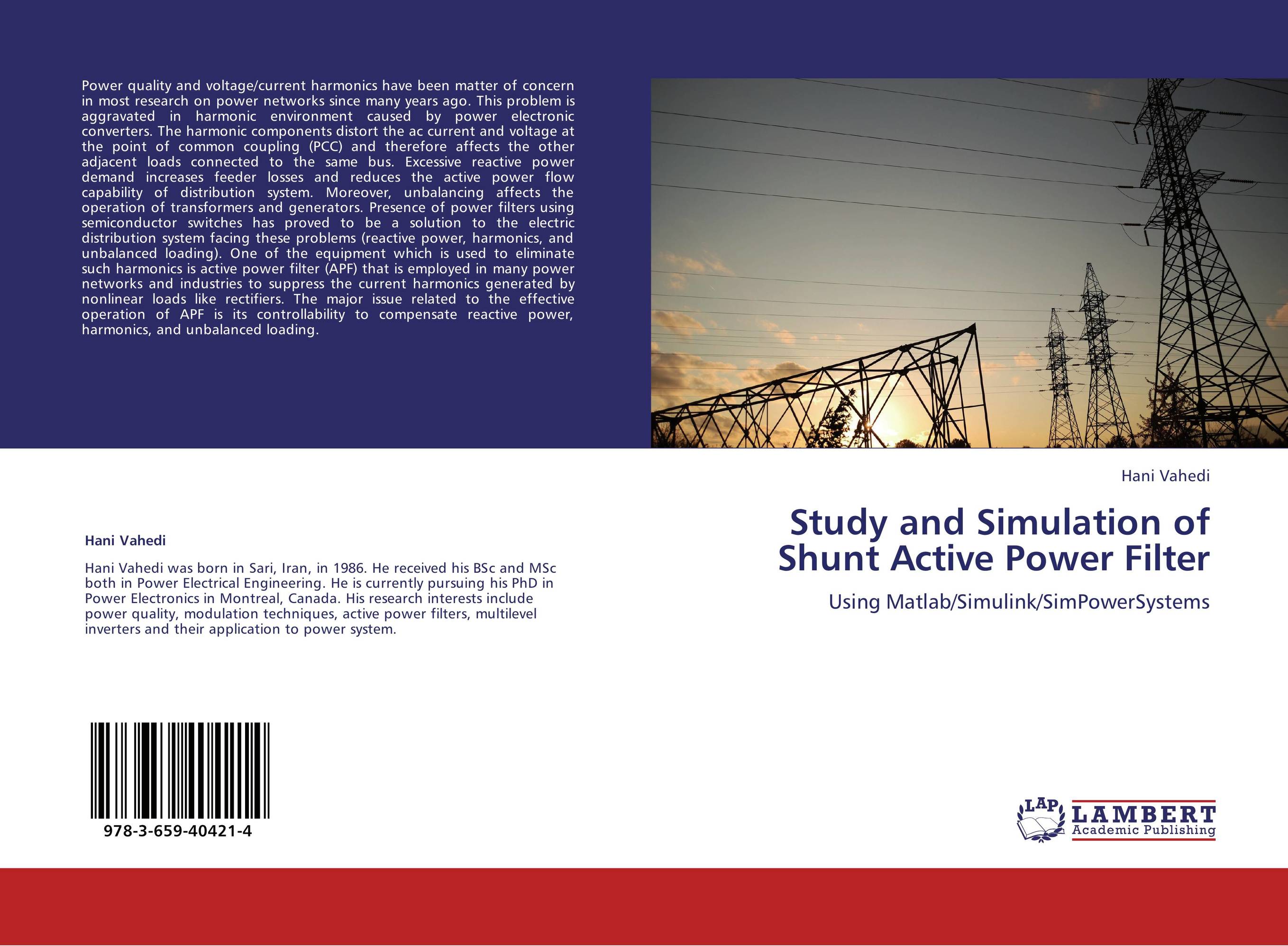| Поиск по каталогу |
|
(строгое соответствие)
|
- Профессиональная
- Научно-популярная
- Художественная
- Публицистика
- Детская
- Искусство
- Хобби, семья, дом
- Спорт
- Путеводители
- Блокноты, тетради, открытки
Study and Simulation of Shunt Active Power Filter. Using Matlab/Simulink/SimPowerSystems

В наличии
| Местонахождение: Алматы | Состояние экземпляра: новый |

Бумажная
версия
версия
Автор: Hani Vahedi
ISBN: 9783659404214
Год издания: 2013
Формат книги: 60×90/16 (145×215 мм)
Количество страниц: 52
Издательство: LAP LAMBERT Academic Publishing
Цена: 22584 тг
Положить в корзину
| Способы доставки в город Алматы * комплектация (срок до отгрузки) не более 2 рабочих дней |
| Самовывоз из города Алматы (пункты самовывоза партнёра CDEK) |
| Курьерская доставка CDEK из города Москва |
| Доставка Почтой России из города Москва |
Аннотация: Power quality and voltage/current harmonics have been matter of concern in most research on power networks since many years ago. This problem is aggravated in harmonic environment caused by power electronic converters. The harmonic components distort the ac current and voltage at the point of common coupling (PCC) and therefore affects the other adjacent loads connected to the same bus. Excessive reactive power demand increases feeder losses and reduces the active power flow capability of distribution system. Moreover, unbalancing affects the operation of transformers and generators. Presence of power filters using semiconductor switches has proved to be a solution to the electric distribution system facing these problems (reactive power, harmonics, and unbalanced loading). One of the equipment which is used to eliminate such harmonics is active power filter (APF) that is employed in many power networks and industries to suppress the current harmonics generated by nonlinear loads like rectifiers. The major issue related to the effective operation of APF is its controllability to compensate reactive power, harmonics, and unbalanced loading.
Ключевые слова: active power filter, Total Harmonic distortion, Hysteresis Current Control, Instantaneous Power Theory



